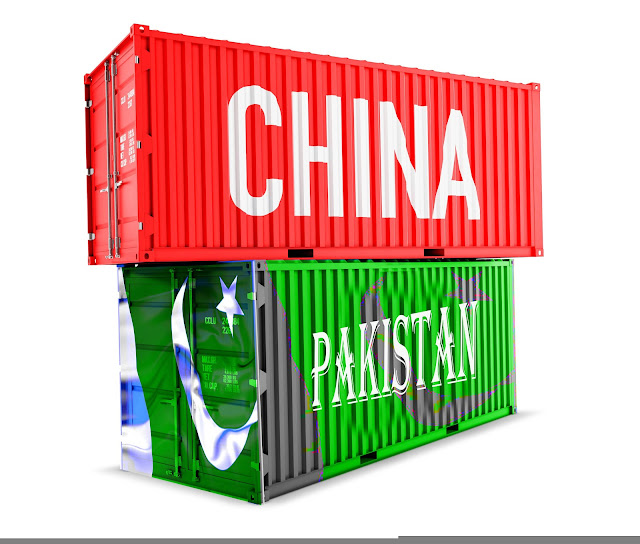 |
| CEPEC |
Despite the fact that the China-Pakistan Economic Corridor, which is part of the Belt and Road Initiative, has made significant progress, some countries and observers are attempting to minimise its vast potential benefits by dubbing it a "debt trap."
Since the CPEC is moving into the next phase of development, opponents are attempting to stymie it with a two-pronged strategy: first, misleading the public by misrepresenting the CPEC's financial figures and achievements in the media, and second, raising the spectre of past militancy in Pakistan to mislead investors into believing the country is still a risky investment destination.
Despite several clarifications from Pakistani government departments, as well as the genuine facts and data surrounding the CPEC, worldwide CPEC sceptics insist on labelling it a "debt trap." Let's break down the CPEC's financial data as provided by the Chinese embassy in Islamabad. Only $5.9 billion of the $18.9 billion in infrastructure finance offered by Chinese corporations so far has been in the form of loans with a 2% interest rate due in 2021. The remaining funds will be used to fund energy projects in China and with other partners.
In addition, a $143 million interest-free loan has been offered for the development of the Gwadar East Bay Expressway in Pakistan's Balochistan region, as well as a $29 million grant to fund humanitarian initiatives. This indicates that loans are utilised to support fewer than 20% of all CPEC projects, while more than 80% are funded through various financial modalities in accordance with international rules.
How can the $5.9 billion CPEC loan be described as a "debt trap" when it represents only 6% of Pakistan's total external debt and liabilities of $99.1 billion? As part of a "hybrid conflict," it's clear that certain international observers, as well as a few Pakistanis, are branding the CPEC a "debt trap" to promote their own interests. Pakistan's total foreign debt and liabilities include loans from the International Monetary Fund, World Bank, Asian Development Bank, and other international lending agencies. Despite this, no one refers to them as a "debt trap."
For the past five years, China has been Pakistan's greatest investor thanks to the CPEC. The CPEC has not only brought more Chinese investment to Pakistan, but it has also changed the country's investment climate from one of caution to one of opportunity. For example, in February, Saudi Arabia inked a $10 billion memorandum of understanding to invest in the Gwadar oil refinery, as well as another $10 billion in other transactions. Other countries, too, are eager to invest in Pakistan, particularly in the CPEC projects, in order to reap significant benefits.
The CPEC energy projects have already assisted Pakistan in overcoming its energy deficit, and the country will no longer be energy-deficient by 2021. As a result, Pakistani entrepreneurs will be able to produce more exportable goods, hence increasing their export revenues.
Since 2015, the CPEC has created around 70,000 direct jobs, with roughly 60,000 of those positions going to locals. Up to 800,000 people are expected to be employed in CPEC projects by 2030.
Another important benefit of the CPEC, particularly the Gwadar port, is that it is expected to attract a large amount of international investment.
Pakistan's transportation network is in poor condition, resulting in an annual loss of around 3.5 percent of GDP, owing to excessive use of gas and lubricants, as well as frequent replacement of spare parts and vehicle breakdowns. Pakistan's GDP was around $304.95 billion in 2017, according to the IMF, which means it lost roughly $10.67 billion due to its weak transportation network.
The CPEC is projected to significantly strengthen Pakistan's transportation network, which will assist lessen this loss. The CPEC would also help Pakistan collect $6 billion to $8 billion per year from road and bridge tolls by establishing the Gwadar port and road network.
By the end of June, Pakistan will have established three Special Economic Zones (SEZs). It also intends to build an information technology special economic zone in Islamabad. Such developments would boost upstream and downstream sectors while also providing more job possibilities for locals.
Pakistan's tourism industry, like the CPEC, is growing at a rapid speed, with the country receiving a record number of visitors. Agriculture is another sector in which Chinese investors have set their sights, and the innovative and sophisticated technologies that they will bring to farming will tremendously assist Pakistani farmers by boosting their yields by a factor of ten.
A $5.9 billion debt payed over a long period of time would have little impact on Pakistan's economy when compared to higher incomes and benefits for Pakistanis.







0 Comments